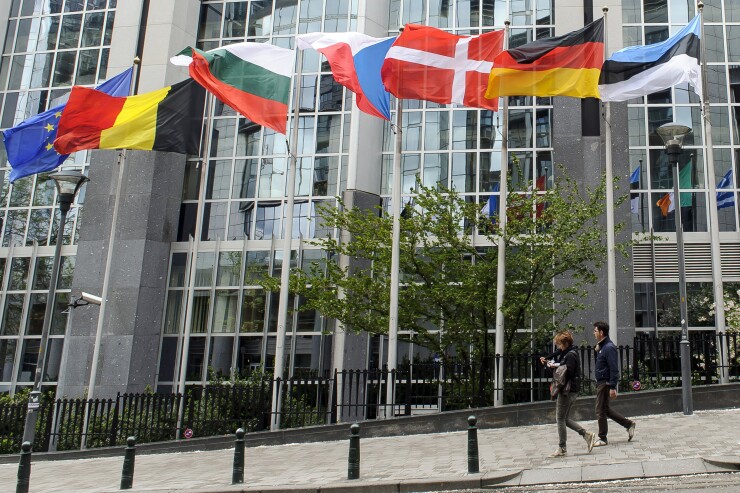Want unlimited access to top ideas and insights?
In January 2018, following the Payments Services Directive (PSD2) compliance deadline, 740 million Europeans will be able to tell their banks to share their personal financial information with more-or-less any third-party service provider they choose.
Some banks may view this as a tough gig and begrudge investing in the technologies that will help their competitors to lure business away from them.
There is another way to look at this. Banks are entering this era in a position of incredible strength; they already have their own customers’ account data and now have the chance to aggregate even more, from sources that were previously unavailable to them.
They also have their customers’ trust. Thanks to PSD2, that long-awaited ‘single view of all of your financial affairs will finally be realised, complete with automated spending analysis, forecasting and advice on how the user might do more with their money.

Consider this: who would you rather have deliver this service, a start-up aggregator app, or your bank, which you have likely trusted for years?
One thing is for sure: these aggregators will line up to partner with banks if the partnership will position them as acquisition targets.
Gandhi had it right: Be the change you want to see in the world. Looking at the news, I sense we could all benefit from having a bit more Gandhi in our lives, right now. Sprinkled, perhaps, with a little James Dean: I can't change the direction of the wind, but I can adjust my sails to always reach my destination.
Banks can learn a lot of lessons from the past two decades of innovation in payments, retail and shopping. It’s been 20 years since Lastminute.com turned the travel industry upside down. Now Airbnb has done it again. Google, Apple and Here have long since done to TomTom what TomTom itself did to the paper map. Not to mention the changes ushered in by eBay, Amazon, Netflix, Spotify, Alibaba and others: Streaming media, e-commerce and mobile commerce are now a fundamental part of everyday life.
The global banking and financial services industry is one of the most essential sectors undergoing digitalisation. Much has been said about the disruptive forces of this wave of change. Its key stakeholders, the world’s banks, are entering a world of huge opportunity. Collaborating within the ecosystem of digital stakeholders, immersing in digital culture and focusing on delivering smart, secure, trustworthy, convenient and relevant digital services to customers offers numerous possibilities.
What lessons can banks learn from the digital winners of the last 20 years? Firstly, don’t hang around. When the disruption cycle bites, the winners are quickly established. Secondly, the winners win because they are bold.
They embrace change as the new normal and reorganise accordingly. They resist the temptation to defend their ground whatever the cost and instead collaborate openly and constructively with their disruptors, partnering, learning and adapting along the way.
Thirdly, they acknowledge that digitally transformed services delivers a better user experience for their customers. They get that the tech alone doesn’t drive change, it is the facility created by the tech that is the key to mass market adoption. Finally, the winners know that data is where it’s at. More than ever before, today’s data can deliver the insights, forecasts and predictions that form the bedrock of a constantly improving user experience and the basis upon which better, more convenient and more relevant services can be developed.
If banks are to prosper throughout their digitalisation they must take an objective and honest look at their ability to adjust their sails. The threat to their digital future comes mostly from within: can they reorganise to respond appropriately to the new digital market? What must happen operationally, technically and culturally to enable them to be the change? Can they shrug off any negative perceptions of digitalisation and reimagine their digital futures?





